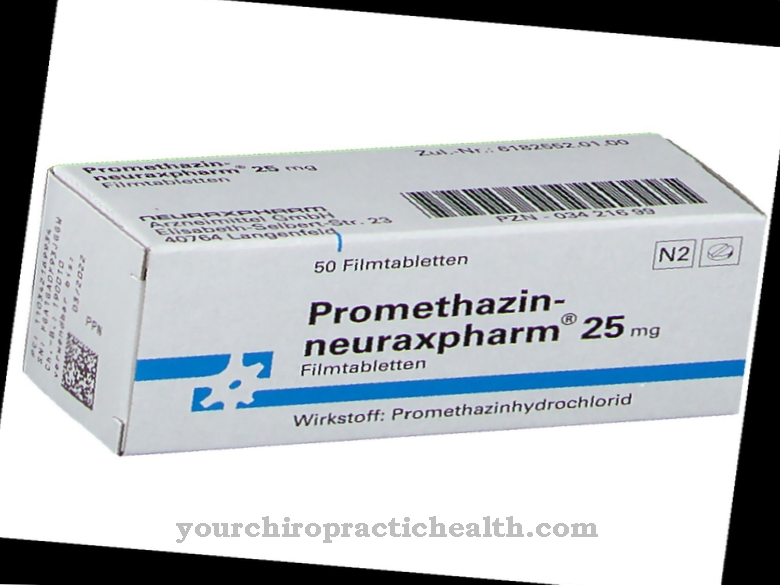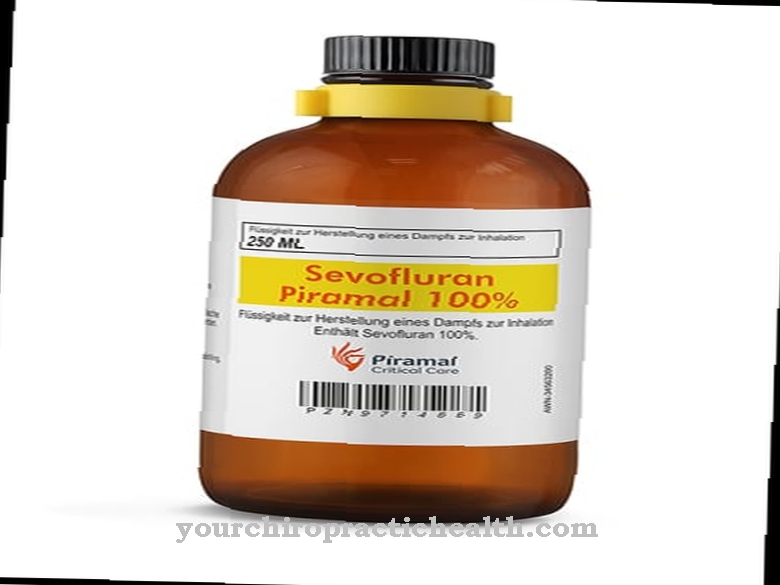Benzocaine is a drug from the class of local anesthetics. The drug is mainly used in local pain therapy in the area of the skin and mucous membranes.
What is Benzocaine?

Benzocaine, like lidocaine and procaine, is a local anesthetic. Local anesthetics have a localized effect and reversibly reduce the excitability of sensitive nerve fibers. The drug is an ester-type anesthetic. Benzocaine blocks the sodium channels on the nerve cells and prevents the transmission of stimuli.
The drug is mainly used as a surface anesthetic. In surface anesthesia, the local anesthetic is applied to the mucous membrane or the skin. The point of action are the end pieces of the sensitive nerves. Surface anesthetics are used to keep small operations painless. Sprays, powders, ointments, suppositories and solutions are available as possible forms of application.
Pharmacological effect
Benzocaine is a sodium channel blocker. The sodium channels play an important role in the transmission of stimuli. In the nervous system, the transmission of stimuli takes place in the form of electrical impulses. Every cell in the body has a so-called membrane potential. In the case of nerve cells, this is called the resting potential. The rest potential is around -60 mV. It arises from the fact that there is an excess of potassium ions in the cell and an excess of sodium ions outside the cell. Potassium ions are more negatively charged than sodium ions. Therefore the inside of the cell is negatively charged in comparison to the outside at the resting potential.
This balance is maintained by the sodium-potassium pump. Only potassium ions get into the cell through them. When a stimulus hits the nerve cell, voltage-controlled sodium channels open in the membrane and allow an influx of sodium ions. The cell depolarizes, the membrane potential rises briefly to +30 mV. This state is also known as the action potential. The action potential is carried from nerve cell to nerve cell via the nerve fibers until the target cell is reached and the desired reaction is triggered.
Sodium channel blockers such as benzocaine suppress this process. They prevent the influx of sodium into the cell, so that there is no depolarization and thus no action potential. In the case of benzocaine, there are no sensory perceptions in the skin area that is supplied by the corresponding nerve. If an area of skin is numbed with benzocaine, pain perception is no longer possible.
Medical application & use
The drug is mainly used for local anesthesia in the area of the skin and mucous membranes. The preferred application site is the mouth and throat area.Benzocaine is found in many common cold medicines. (Over the counter) lozenges for sore throats or teething problems often contain benzocaine.
Benzocaine can also be used to treat stomach pain. Cough suppressant drug preparations also often contain the local anesthetic drug. Creams, solutions and powders are used, for example, to relieve pain from corns, athlete's foot, calluses and warts.
Benzocaine suppositories are also available. These are used for rectal anesthesia for hemorrhoids or other anal problems such as anal eczema or anal itching.
Benzocaine can also be used as a delay cream. For this purpose, the drug is applied to the glans of the penis. The numbing effect is supposed to reduce the sensations in the genital area in order to prevent premature ejaculation. Before the beginning of the sexual act, the agent should be applied to the glans with the foreskin pulled back. Anesthesia starts after just one minute. It subsides after 10 to 15 minutes. Some condoms also contain benzocaine. There is a small amount of benzocaine ointment in the reservoir of these special condoms. The warmth of the penis causes the ointment to dissolve and desensitize the area. Due to the low dosage and the uneven distribution, however, the desired effect is often not achieved.
You can find your medication here
➔ Medicines for painRisks & side effects
Benzocaine contains what is known as a para primary aromatic amino group. The para groups have a significantly higher allergic potential than non-para-substituted local anesthetics such as lidocaine. In the event of intolerance, allergic reactions can occur on the skin. Red, brownish or white spots can form on the affected areas of the skin. Fluid-filled vesicles, purulent pustules, or wheals may appear. The skin is reddened and warm. It may be painful or itchy. Benzocaine can cause stomach pain when taken orally.
A rare side effect is so-called methaemoglobinemia, in which there is an increased level of methaemoglobin in the blood. From a level of 20 percent, there are signs of a lack of oxygen supply. These include symptoms such as headache, confusion, and blue skin. A coma can develop if methaemoglobinemia is severe. However, this state can only be achieved with very high doses of benzocaine.



























